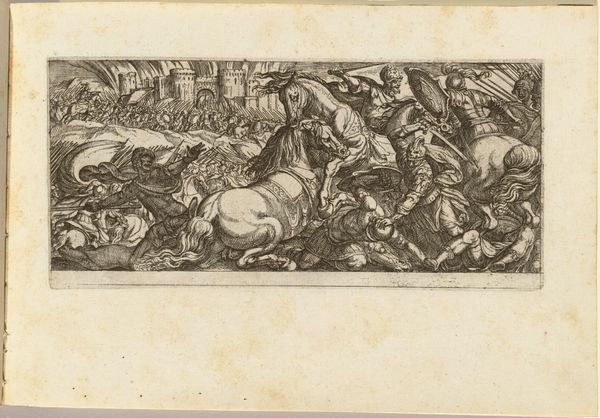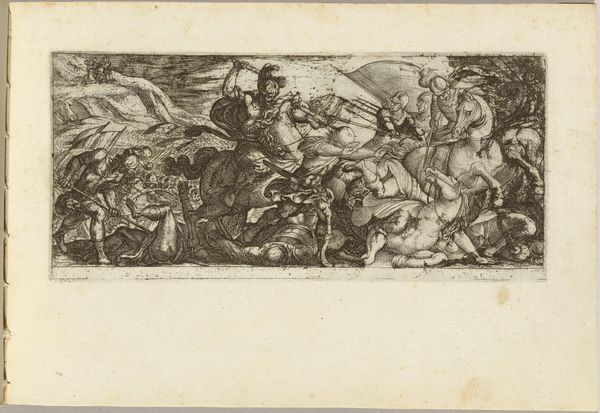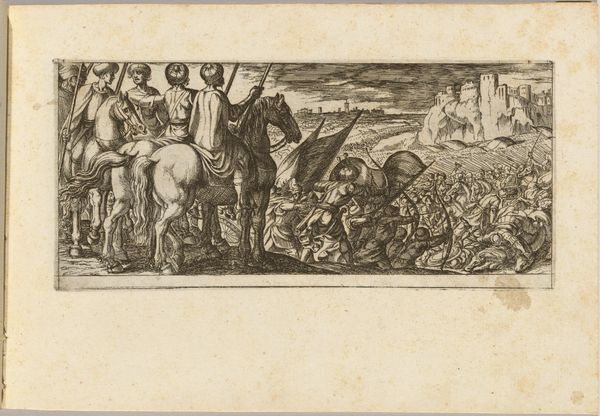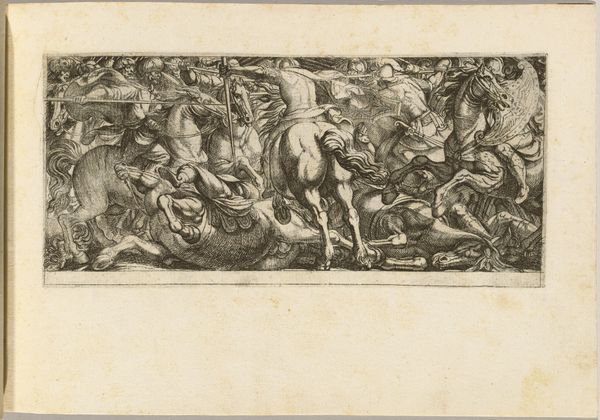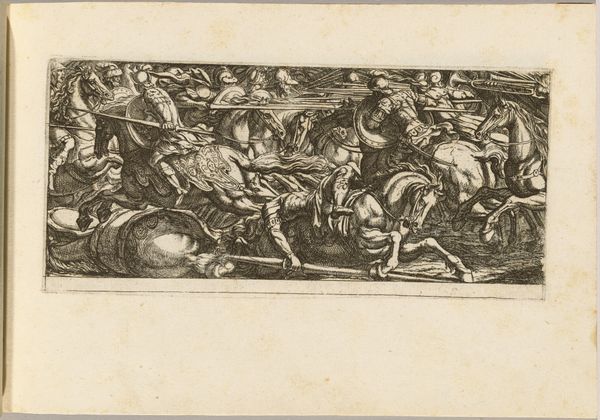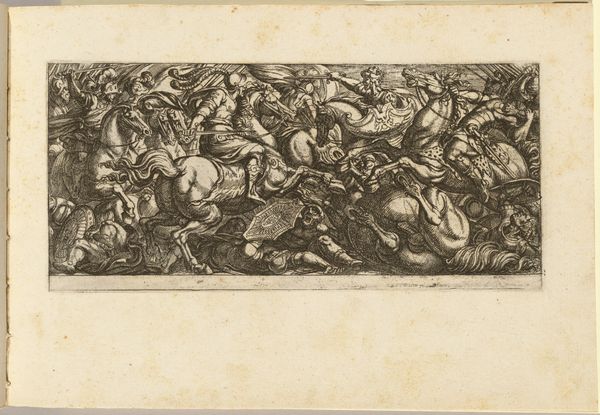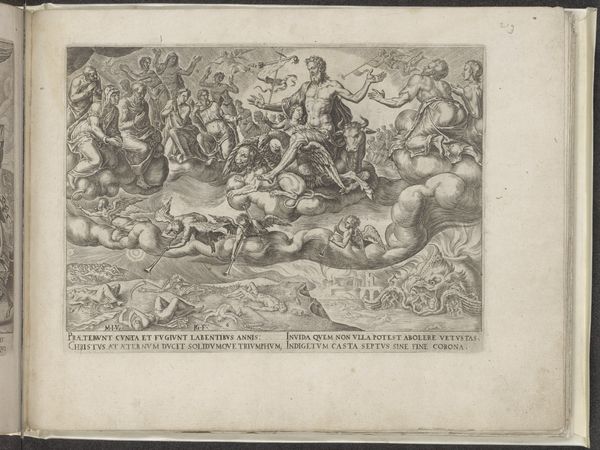
print, engraving
#
baroque
# print
#
figuration
#
line
#
history-painting
#
engraving
Copyright: National Gallery of Art: CC0 1.0
Editor: So, we're looking at "Cavalry Engagement" by Antonio Tempesta. It’s an engraving. There’s so much chaotic energy here! I’m curious how an artist creates such a dynamic scene in a medium like this. How do you interpret this work? Curator: Well, it's crucial to see Tempesta within his socio-political context. Consider the patronage system of the time, and the constant warfare. Prints like these served as news, propaganda, and even decoration. They also amplified an artist's reputation to a wider audience. Did such imagery reinforce or question societal structures, do you think? Editor: Hmm…I see your point. It looks quite romanticized, almost like glorifying battle. It seems intended for a particular elite audience, not those on the ground. Is that a fair assessment? Curator: Yes, very astute! These prints often catered to aristocratic tastes, valorizing military prowess and leadership. But also consider how the 'style' affects how a society processes 'history' - that relationship is not set in stone! What artistic techniques did Tempesta use to heighten that sense of dynamism, though? Editor: I guess it's the sheer number of figures and horses crammed into the scene, the swirling lines… he definitely captures the frenzy and brutality. Almost a baroque precursor to photojournalism, but filtered by wealthy patronage. Curator: Precisely. The 'reality' of battle is carefully mediated. Considering who paid for such depictions forces us to think about what the consumer thought of 'reality'! Editor: This was more complex than I initially thought. Thanks for widening my lens. I learned that history and style work hand-in-hand here, something I have to keep in mind going forward. Curator: Indeed. Considering these dynamics helps us better appreciate both the art and its social role.
Comments
No comments
Be the first to comment and join the conversation on the ultimate creative platform.


